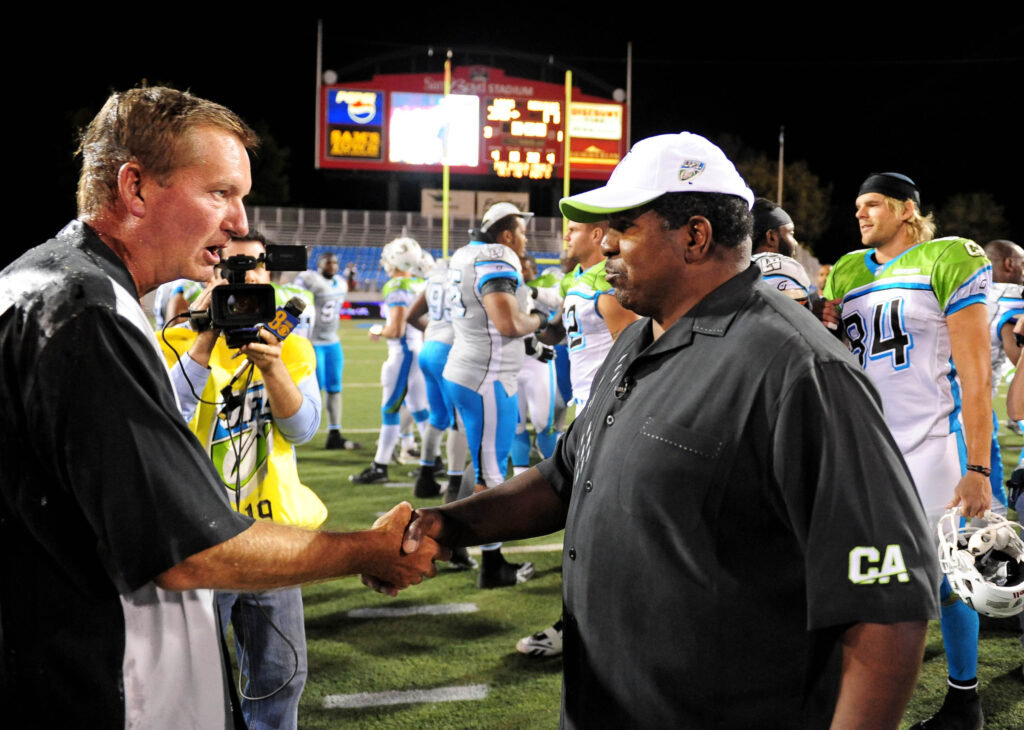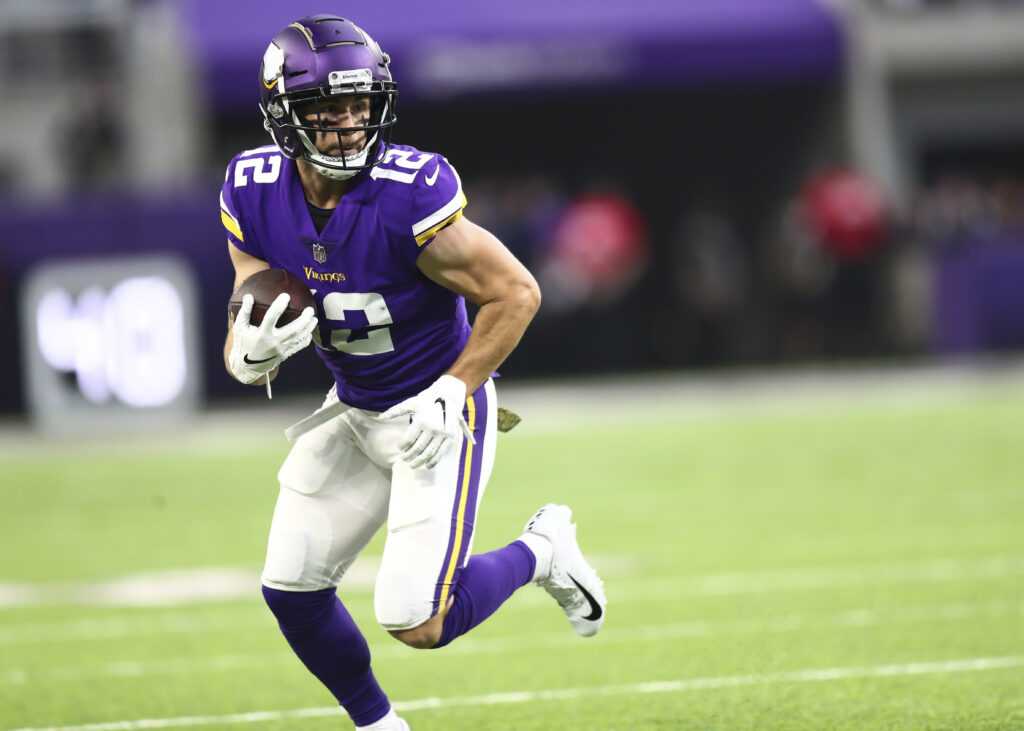As long as the NFL has existed there have been other football leagues either trying to challenge its place at the top or aiming to carve out a niche in its shadow.
Back in the 1960, the American Football League began with a group of owners who called themselves “The Foolish Club.” It turned out that they were the only bunch to ever start an alternative league who were not foolish. The AFL landed a massive TV contract and poached enough talent away from the NFL to eventually force a merger. Since then other leagues have not been so lucky. The USFL tried to compete with the NFL in the 80s and had some success by landing players like Jim Kelly and Herschel Walker but collapsed after only a few seasons. In 2001, the XFL famously drew massive TV ratings for its opening game, only to wither and die within one year.
After Vince McMahon’s XFL flamed out almost instantly, there wasn’t much in terms of buzz for another competitor to the NFL. It was pretty clear that the king was not losing its crown and all attempts to go after its share of the football marketplace would be futile.
But from the ashes of the XFL 1.0 were some positives. Players like Tommy Maddox and Rod Smart (A.K.A. He Hate Me) made NFL careers from McMahon’s football creation and the NFL borrowed some of the XFL’s ideas, most notably in the broadcasts.
There are presently two spring football leagues — new versions of the XFL and USFL, which are built on the concept of players trying to keep NFL dreams alive and as a proving ground for rules and broadcast elements that might ultimately work in the NFL. XFL co-owner The Rock created a documentary series to go along with the XFL that told stories of those competing to get NFL eyeballs on their game. He has pushed the league as being filled with “54th” players, in reference to the NFL’s 53-man rosters. On one of the XFL 3.0’s first broadcasts — a game between the DC Defenders and Vegas Vipers — they highlighted a player who was currently working as a math teacher. It also showed replay reviews in real time with the referees mic’d up.
The bridge between the wild original XFL and the humble XFL 3.0 and USFL was the United Football League.
If you ask 100 people about the UFL, 99 will have never heard of it and the other might say: “Wasn’t Daunte Culpepper in that league?”
The UFL came along before social media had taken over every waking moment of our lives. It barely got off the ground enough to play actual games and there wasn’t a notable circus. There wasn’t a huge rule change that it inspired (though they tried) and there wasn’t a QB like Maddox who made a heroic return to the NFL.
But the UFL, which ran from 2009-2012, had a long-lasting impact on many people who were involved and gave Dennis Green and Daunte Culpepper one last ride together.
Denny and Robert build a team
The United Football League was Denny Green’s last stop as a professional coach.
In 2009, the former Minnesota Vikings coach was hired as the head coach of the California Redwoods, one of eight teams — check that, one of four teams. The league initially planned to have eight but settled on four when there were ownership/funding issues.
Green hadn’t coached since 2006, his final year with the Arizona Cardinals. Prior to that he put together one of the most impressive stints of any coach in NFL history. Green won 97 of 159 games in Minnesota, good for a .610 winning percentage. For context: Green’s mentor Bill Walsh’s career win percentage was .609. Joe Gibbs and Bill Cowher finished their careers at .623 and Mike Holmgren .592. Three unfortunate seasons in Arizona sent Green tumbling down the all-time list to 70th in win percentage, where he coincidentally resides .001 behind Jerry Burns.
Green was approached about coaching and GM’ing a UFL team shortly after he was let go by the Cardinals in 2006 and decided to take on the challenge. He lived in San Diego, only about mile-and-a-half away was one of his favorite former Viking players Robert Griffith. One day he asked his former star safety if he would be willing to join on and help him build a squad from scratch.
“We met a lot and he told me, ‘Hey, I’m thinking about signing on to this new league, I’m working through the contract and if I get it I want to bring you on my staff as general manager, assistant GM, personnel director, one of the C-suite positions,’” Griffith said over the phone while stuck in L.A. traffic. “I said OK. Once he locked it up, we went to lunch and he said, ‘It’s time to get you some working experience.’”
Without a whole building of people working different areas like in the NFL, lots of different jobs fell on Griffith’s shoulders. Contracts, sponsorship, marketing, coaching safeties and fielding endless calls from agents and players who were hoping to get in the door.
“I had at least 100 phone calls a day, minimum,” Griffith said. “For players with agents and film and resume and skills and ready and will travel etc. etc. I had really workouts especially during the season for guys that I saw and had an up-to-date list of guys that became available to pull the trigger at a moment’s notice. We get a guy hurt in the third quarter and I’m already on the phone calling an agent that has a running back who can fly in.”
The Redwoods opened up the 2009 season on the Versus TV network with Dave Sims and Doug Flutie on the call. They played at Sam Boyd Stadium in Nevada against the Las Vegas Locomotives, who were coached by Jim Fassel and quarterbacked by ex-NFL’er JP Losman. The Redwoods lost 30-17 in front of an announced crowd of around 18,000. The next week they played at the San Francisco Giants’ stadium, then called AT&T Park and got their first win in front of less than 7,000.
When the first year was up, Green and Griffith won just two of six games. At the same time, quarterback Daunte Culpepper was in the midst of a rough stretch attempting to keep his NFL career alive. He went 0-10 with the Lions over two years.
Green and Griffith convinced him to join the Redwoods, who were set to move to Sacramento and become the Sacramento Mountain Lions in 2010.
“I was the one who called him up. I was like, ‘Hey man, you in shape? You want to play?’” Griffith said. “It was great to play with Daunte and then be on this side of it and be involved in getting him in there. It just felt like Daunte just wanted to have fun. It wasn’t really about the money or getting back in the league or anything, it was just about having a good time and playing for his coach.”
“He was adamant about only wanting to play for Denny,” Griffith continued. “If I’m going to come do this with anybody and take this pay, then I’m going to do it with a guy I trust that I’m going to have a good time with.”
With Culpepper under center in 2010, Green opened up his offense like it was 1998 again. The massive quarterback started launching bombs, leaving no doubt that his arm strength was still elite, even if his knee trouble had caused his mobility to fade.
It isn’t easy to find accurate UFL box scores but according to the website StatsCrew, Culpepper finished the eight-game season with 1,944 yards, nearly 500 yards ahead of the next best quarterback, long-time NFL’er Josh McCown. Jeff Garcia and Brooks Bollinger ranked third and fourth.
The games were entertaining, even if nobody was watching. On September 25, 2010, the two Minnesota QBs Culpepper and Bollinger got into a wild shootout in which Daunte brought the Mountain Lions back from down 17-7 in the fourth quarter to win on a 35-yard touchdown pass with 30 seconds remaining.
Griffith wasn’t surprised that Daunte still had his competitive edge, even if it wasn’t at the highest level anymore.
“That’s what makes you a superstar, you give a damn,” the former safety said. “At the end of the day, it still had ‘Culpepper’ on the back of that jersey.”
Griffith enjoyed seeing his old quarterback sling it around. It gave him just as much joy to scout and develop players who were trying to break into the NFL. He remembers clearly the first time he saw Andrew Sendejo at a tryout. Out of around 500 players, Sendejo’s speed (around a 4.5 40-yard dash) stood out as well as his tackling ability.
“When I saw him, I saw myself,” Griffith said. “What I saw was somebody that was going to be aggressive and actually go after it and was smart enough to run and call a defense and play well and be versatile.
“I sat right next to Denny and said, ‘This is one of the guys I like.’ When I saw his shoulders and biceps and neck and I see that this person is serious about what he’s doing. You don’t get that without working. The same way when Denny Green saw me in a workout is the same way when I was standing next to him he’s seeing the same guys. So when I said, ‘Hey coach, check out him,’ he said, ‘I see what you’re seeing.’”
Sendejo led the Mountain Lions in interceptions and tackles and was second in pass breakups. By the following season, Sendejo got chances with the Cowboys and Jets and by 2011 he was a Minnesota Viking. Two years later he was starting next to Harrison Smith.
“We made a bunch of recommendations, I had a bunch of coaches call me, I was complimentary and I’m glad it worked out because I was right about him,” Griffith said. “He went to the Vikings… I’m a part of that story and I feel good that he went to that team, made that team and then became a starter.”
Ultimately Sendejo played as a starting safety until 2021 and appeared in 136 games, 99 of which came with the Vikings.
He wasn’t the only UFL-to-NFL’er that Griffith spotted. Tyler Clutts was a former Fresno State defensive linemen who bounced around different leagues after college, playing with the CFL’s Edmonton Eskimos and then Utah Blaze of the Arena Football League. Griffth had an idea: What if we moved him to fullback?
“We ran him a couple times at fullback… Denny asked me what he looked like and I said, ‘He looks like he’s going to kill people in the game at fullback,’ that’s exactly what I told him. I said, ‘Coach, we might have did something here,’” Griffith said.
Clutts’s position change ended up changing his life. In December 2010 he got signed as a fullback to the Browns practice squad and then the Bears signed him from there in 2011 and he stuck in the league, playing for Houston, Miami and then Dallas for three seasons. Clutts finished with 72 NFL games and now works real estate in the Dallas area and co-hosts a podcast with Cowboys legend Darren Woodson.
Griffith loved the front office element of his job with the Mountain Lions.
“I knew right away that I could fill several C-suite jobs in the NFL,” Griffith said. “I knew that I could be a personnel director because I know what I’m looking at. I knew right away that I could handle contracts in a GM type responsibility. It gave me a lot of working knowledge on a smaller scale and got me working experience and let me know if it was something I wanted to go after.”
For years after the Mountain Lions folded in 2012, Griffith didn’t take advantage of his experience under Green. But when the COVID pandemic hit in 2020, he was inspired again. He decided to go back to college to get his MBA. When we spoke, he was closing in on graduating from the Gabelli School of Business in at Fordham.
“It was on my bucket list, my mom has two masters degrees and education is important to our family so I took it upon myself to go after it,” he said.
Now his goal is to land in an NFL front office. If/when that does happen, it will draw back to his time with the Mountain Lions. Not only did he get a chance to do many front office jobs with hands-on experience, Griffith feels that his time working closely with Green gave him invaluable insight into player evaluation and team building.
“It gave me a true look into the brilliant mind of Dennis Green, man,” Griffith said passionately. “His skill and his acumen to be able to evaluate the whole guy. Not just the player, the whole guy. There’s a risk assessment, there’s a good-bad-ugly, there’s all this stuff that goes through his mind very, very quickly. The talent is one thing but it’s really more about chemistry and the culture that he wanted to provide. I get why we had great teams and we went to the playoffs every year except one for me, seven of eight years we went to the playoffs. I get it now.”
Always meet your heroes

Liam O’Hagan had about an hour to sit down inside of a downtown Minneapolis Starbucks before heading off to work at Bank of America, where he manages investment portfolios for “high net-worth individuals.” A decade ago he was Daunte Culpepper’s backup quarterback for the Sacramento Mountain Lions.
O’Hagan went to Breck, which the locals know most for its powerhouse hockey program. In football they were very competitive but also offered enough opportunities for good players to get lots of playing time. O’Hagan’s older brother, who went on to play baseball at Stanford, was the starting quarterback for three years while Liam played linebacker, receiver and running back as a freshman. He took over under center as a junior and went to the state finals in back-to-back years. Star NHL player Blake Wheeler was on that team as a receiver.
“Breck allowed us to be on the big-fish-small-pond stage,” O’Hagan said. “Maybe we would have been marginalized in bigger places because there’s so many good athletes who went to those schools.”
O’Hagan started getting recruiting letters to play defense when he was a sophomore and caught the interest of University of Minnesota head coach Glen Mason, who offered him to play at The U. But he wanted to play quarterback. He was more realistic about his football future, understanding that the quarterback playing for the Vikings at the time was 6-foot-4, 260 pounds and could throw it from Minneapolis to St. Paul.
“I started getting these offers from like Vanderbilt and that led me to think I should probably try to maximize the school and go to the best school possible and see how it goes,” O’Hagan said over coffee. “Looking at myself in the mirror, I’m not Daunte Culpepper, you know? The education part was critical.”
In his senior season, Breck won in the Metrodome and he set a state record with 55 touchdowns for the season. He chose Harvard, where he backed up long-time NFL quarterback Ryan Fitzpatrick.
O’Hagan describes his playing career at Harvard as “rocky.” In 2005 he threw for over 2,000 yards and scored 23 touchdowns as a sophomore but wasn’t able to build on that season, in part because of a labrum tear in his shoulder that required surgery.
“I had to have the full Drew Brees treatment,” O’Hagan said. “I got to see James Andrews… but it took forever to come back from something like that. I came back for a fifth-year redshirt year but I wasn’t really as dangerous and then by the time the season was over I was feeling really good. I was like, hey, what do I do with this?”
He participated in Harvard’s pro day and landed workouts with the Jets and Ravens but didn’t stick with either club. Once the UFL began to gain momentum, he reached out to Dennis Green to ask about any possible opportunities.
Denny told him to fly out to San Diego for a workout. O’Hagan called a former Harvard teammate who lived in San Clemente and asked him to come along and catch passes for him. But when he got there, Denny had different plans.
“We met his son Zach at some park after lunch,” O’Hagan said. “I was like, ‘My buddy can run and catch and stuff.’ He was like, ‘No, no, I’ve got Zach here.’ Zach was probably like 12 or 13, he was a kid. So I was ripping them at Zach and he was catching them really well. I was super surprised. That was the start of it. He probably knew already that I was a smart player and a tough guy and that’s what he likes.”
O’Hagan signed for $50,000 and went to training camp in Arizona.
He knew of Green’s time in Minnesota — after all, he was a kid when Green led the Vikings to the playoffs eight times between 1992 and 2000 and led one of the most exciting offenses in NFL history in 1998. But he didn’t know what to expect from a coach whose best years were behind him. What he found was the ultimate player’s coach.
“He mentored all of us,” O’Hagan said. “There were some guys who needed a little more and he took them under his wing as a father figure. Every day you would see it. He put a lot of care and energy into the team even though he was closer to 60-70 years old and it was at the end of his career but he put everything he had into it.”
O’Hagan remembered days where he would find Green asleep at his desk after a day of work that started in the early hours — or maybe didn’t end from the night before. He didn’t know any other way, no matter what league he was coaching in.
“You could always go to him if you had something going on, he never scared anyone or intimidated anyone,” O’Hagan said. “He was a constant positive force and motivator. At the same time he was so dynamic in the way he could coach everything across the field. He would make adjustments during the games and go to different coaches and tell them, ‘I think we should think about this.’ He would get emotional during big wins and then he’d let us know when we were screwing it up or he’d get the captains and veterans together — he knew how to get things back on track really fast and get people to buy in. I’ve never been on a team where everything was so cohesive.”
O’Hagan got a front row seat to watch Green’s aggressive offensive philosophy at play along with his feel for the game after so many years of dialing up deep shots to Randy Moss and Cris Carter.
“He had a really good knack of when to go for the big play, when the timing of it was and when he thought we needed a big play and he’d go over to Mike [Kruczek] and say, ‘Go up top here,’” O’Hagan said. “And we hit a lot of those. I liked that about him. He wasn’t too conservative, always pedal to the metal, which you want to have as a quarterback.”
After one year as Shane Boyd and Mike McMahon’s backup, O’Hagan got a chance to wear the same uniform as one of his favorite players growing up when the Mountain Lions signed Daunte Culpepper.
“I think our first interaction was being like, ‘Yeah, I grew up in Minnesota,’ and I didn’t have to say anything else, it was like, ‘Obviously I had your jersey,’” O’Hagan said. “It was so cool.”
Sharing the QB room with Culpepper was everything he hoped it would be. O’Hagan was extremely familiar with Culpepper’s physical skills but to see him up close even well past his prime was like nothing he had ever experienced.
“I still remember in training camp with his pads on and somebody said, ‘Daunte you’re looking kind of heavy,’ and he would do a back handspring just standing there and he was like, ‘How did that look?’” O’Hagan said.
But he learned more about Culpepper’s intellect and leadership. The three-time Pro Bowler had 100 NFL starts under his belt at that point and understood the nuances of pro football fluently.
“He was a unique talent physically but also cognitively, mentally, he was really good in the film room and I think that’s the stuff people miss about all of these guys,” O’Hagan said. “When I was with him he had so much great experience and so many years with Denny and in the NFL with the best coaches. He had a great sense for the game.”
O’Hagan loved watching an idol of his compete even when there wasn’t an NFL future or Super Bowl at stake.
“He wasn’t big-timing anybody, he wanted to win all of those games and he was putting his body on the line for it, which I thought was pretty cool,” O’Hagan said.
While Culpepper cooked UFL defenses, O’Hagan played the scout team role. He understood that a third-string UFL quarterback wasn’t going to put him in line for an NFL career and began preparing during his time with the Mountain Lions for the next phase of his career: Investment banking. He worked in Hong Kong for several years before returning to Minnesota to work for Bank of America. Now O’Hagan looks at his time under Green and alongside Culpepper as years that shaped who he has become professionally. It was an introduction to real life.
“It was a big phase for maturity,” O’Hagan said. “The big years we had in high school and Harvard, we’re still student athletes but doing something at the professional level and the expectation — and Denny did a great job teaching us to be pros, you had to be on time or early for everything and be prepared and if you’re not then you’re not doing your job — that was huge for me. That was my leap. Maybe I wasn’t becoming the best quarterback around but as a person, as a human and as a professional that was a big leap for me and Denny was a major force in that.”
The PR man brushes with fame
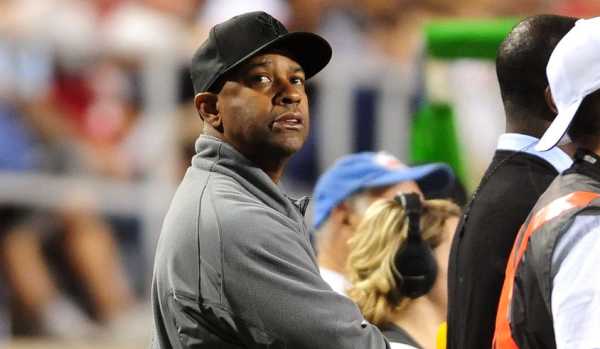
Russ Edmonson went to school at Sacramento State in the late 1990s. His first job out of college was working as a sports editor for The Placer Herald and The Lincoln News Messenger newspapers. After eight years, he knew that the future probably wasn’t going to be kind to the newspaper industry and that his humble paychecks weren’t likely to grow exponentially. So when it was announced that the California Redwoods were moving to Sacramento, he reached out to people that he knew with the Mountain Lions leadership group and landed a job as the public relations director.
Having Denny Green and Daunte Culpepper on the team along with being connected with the local media helped make his job of promoting the team easier from the jump. It was an added bonus that the Mountain Lions signed running back John David Washington, son of legendary actor Denzel Washington.
John David, who has since become a star actor in Ballers and the Spike Lee movie BlacKKKlansman, played his college football at Morehouse and spent time on the St. Louis Rams’ practice squad. In 2007, he played in NFL Europe for the Rhein Fire but didn’t catch on in the NFL after that. In 2009, he signed with the California Redwoods and came along with the team when they moved to Sacramento. That was where he established himself as a weapon for Green. Washington totaled 495 yards rushing on 118 carries, caught 15 passes and scored five touchdowns over three years. His wildly famous father was in attendance regularly.
Edmonson would chat with Denzel at halftime and give him updates on statistics. When Denzel had a movie come out during the season, the entire Mountain Lions staff got a private screening. Others remember him buying out the bar at the hotel the team stayed in after wins.
“I had to walk a fine line because he didn’t want to just get media because of who his dad is,” Edmonson said. “He very much wanted to make his own thing and I love that he’s been able to do that with his TV show Ballers and a bunch of movies. I remember one time he was calling me and said, ‘I understand how this works but I want to make sure people aren’t doing these stories because of my dad but because of me.’ I really respect how he did that.”
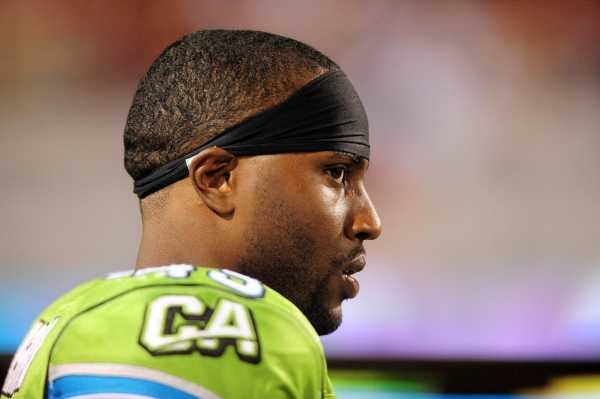
John David’s mother Pauletta, a gifted actress and singer, performed the national anthem before one of the games. She also got run over on the sideline during a game. Denzel ended up talking about the incident on Letterman.
“They were showing the video about how funny that was and how fun UFL games are and he was talking about Culpepper,” Edmonson said. “Pauletta wasn’t hurt so that was good as the PR director.”
Of course, Edmonson wasn’t just the PR man of the stars. He worked most closely with Green and Culpepper and has fond memories of both.
He remembers Green’s battle with the practice field, which was across the street from the team’s hotel. Green coach flew out the NFL’s grass expert George Toma to help him get the turf in the best shape possible.
“The first time I saw the field, I was like, ‘This is going to be the practice field? There isn’t going to be enough space,’” Edmonson said. “But Denny figured everything out with all the markings and space and all the kickers and punters and Daunte could throw his 75-yard passes. He put so many hours into it. He cared about these players. They hadn’t made the money that Denny or Daunte had made. They were trying to get their career… he tried to do everything he could to put the work in so he wasn’t cutting these guys short.”
Edmonson enjoyed working Denny and stayed in contact with the former Vikings coach long after the UFL was over. Asking Russ to talk about the Mountain Lions jogged a bunch of memories for him, like the production meeting before one of the Versus network broadcasts where Denny explained his famed “we let them off the hook” rant when he was coach of the Cardinals. Denny had a sense of humor about it.
“He was laughing and cracking up but he was like, ‘I was right, that’s what happened!’” Edmonson said.
The PR man recalled a game in Florida in which the team had to wait around for a plane alone in the airport. Taps at the open bars were working so players poured themselves celebratory beers. When the plane arrived, Denny put a bunch of money in a cup and left a note before they took off for Sacramento. He imagined the workers reading the note the next day like, “seriously?”
Edmonson remembered another time where Denny was talking with Marty Schottenheimer and Bill Cowher before a game and he got to be a fly on the wall. Those were some fun times for a guy who was covering prep sports for a decade.
He had a similar fondness for Culpepper, in part because he got a window into who Culpepper was as a person after having seen his highlight reels in Minnesota. Edmonson remembered Culpepper bringing his wife and kids to the practice field and watching them play. He remembered how happy Culpepper was when the Mountain Lions won a game in Orlando where he had been the most prolific quarterback in University of Central Florida history. He remembered a long walk with Culpepper after a loss in Omaha in which the quarterback shared with him how much he couldn’t stand to come up short.
“He said, ‘Losing hurts, you work so hard and losing games like this hurts,’” Edmonson said. “My thought at the time was that this didn’t matter to [Culpepper] that this wasn’t the NFL or that we were in a converted baseball stadium. On this night what mattered to him was that he gave everything he had at practice and in the game. Walking across the field to a UFL locker room he was heartbroken about losing the game. He wanted to win. Moments like that he felt like losing that game hurt as much as losing any other game that he may have lost in the NFL. That was the moment I always remember.”
When the league came to an end, Edmonson took the job he still has today. He’s the media information officer for the Department of Toxic Substances Control in Sacramento. It’s note quite the same as giving Denzel stats updates. He still has a lingering feeling of disappointment for all the players — particularly guys who might have made the NFL with a little more seasoning or time to show what they could do. But the memories and relationships have stayed with him.
“It was a blast, I’m glad it happened,” Edmonson said. “I wish it could have lasted a little bit longer. I think football fans benefitted from it. The players benefitted from it too. No regrets. I’m glad I took that job. Watching Denny and Daunte up close, in practice, on the bus, in the hotels, was a lot of fun, it was great to witness.”
The new coach
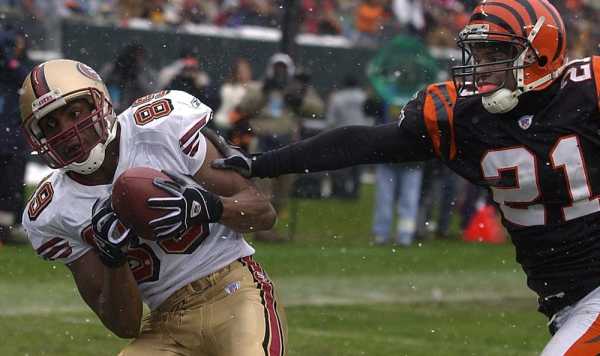
Jeff Burris was a good NFL player. He spent 10 years in the league with the Bills, Colts and Bengals and retired at age 32 in 2003. After his career was over, Burris wasn’t really sure whether he wanted to stay around football or do something else with the rest of his adulthood. He dipped his toe in the water at a high school in the Indianapolis area and “caught the coaching bug.”
The experience led him to a week-long opportunity with long-time NFL head coach Jerry Glanville at the Texas vs. Nation Bowl — a collegiate All-Star game that existed from 2007 to 2013. He enjoyed the week and then went back home to Indy to return to coaching high school and doing some broadcasting locally.
Shortly after that he got an email from coach Glanville. He thought it was spam, so he deleted it. And then he got a call from Glanville’s right-hand man Dan Kuhn asking why he hadn’t responded to Glanville’s email asking him to join the Hartford Colonials coaching staff.
“I was like, oh absolutely,” Burris said.
But the team ended up falling through and Burris was a free agent UFL coach. Denny Green and Marty Schottenheimer both called him about opportunities but he decided to go with Denny because he’d called first. It was a bit ironic because Burris nearly joined the Vikings in the late-90s before signing with the Colts.
“I was always a fan of coach Green,” Burris said. “That same year [I signed in Indy] we were 3-13 and that’s when Cris Carter and Randy Moss were going off tearing people up and I was like, ‘Man!’ For me [Sacramento] was an opportunity to work with coach Green.”
It was in Sacramento that Burris learned how to coach at the highest level. He coached defensive backs in a situation where every player was desperate to shine individually but had to work together to actually succeed on defense.
“It was chaotic,” Burris said. “That would be a light term. You’re dealing with a lot of egos. Guys wanting to prove themselves and feeling like they deserve or are owed certain things, especially those guys who had played in the league that were trying to prove themselves again and create more buzz for themselves. That was the most interesting part about it, watching him conduct that.”
It was in Sacramento that Burris found out what preparation in pro football was really like.
“You see the small nuances that come along with coaching,” Burris said. “I can remember having to pull an all nighter and didn’t go to bed until the next day until after practice but it was about being prepared and having every single guy ready to go.”
Unfortunately for Burris, he joined just as the league was hitting the skids. Money issues brought along questions about whether they could even finish the season.
Green wanted to play until the lights went out. Before the final game in Omaha, the league told them that the game was going to be cancelled but Green got together with the Omaha team and they all decided to make it work. One last hurrah.
“We flew out to Omaha and each guy had to pack up all their gear and pack up the hotels because it was going to be over,” Burris said. “It could have ended mid-week but Denny was not going to let that happen. He said, ‘We’re going to play this game,’ and we’re going to go out and have fun and do this together. That’s my lasting memory: The man coach Green and staying true to himself as a coach and a mentor and to allow us to have one more opportunity to coach.”
Green knew the coaches weren’t going to get paid because of the league’s floundering economics so he paid them out of his own pocket.
“I was like, ‘That’s the type of coach I want to be,’” Burris said.
His experience turned out to be the kick starter he needed for his coaching career. Burris got a job working at UMass as the cornerbacks coach in 2012 and then spent three seasons as an assistant with the Miami Dolphins after that. As coaches often do, he’s bounced to different jobs, landing at Notre Dame, Northern Iowa, Louisiana Tech and currently with Louisiana.
Those jobs might not have come his way without the Mountain Lions experience.
“This is a very competitive profession,” Burris said. “It’s all about connections.”
Post-script
After the United Football League cut short its 2012 season, the league said that it intended to return in 2013 but it was too wrought with financial issues and never came back. It was the last time Dennis Green coached. He passed away four years later at age 67.
Daunte Culpepper had at least one workout in the NFL after performing well in the UFL but it never materialized and he never played pro football again.
In comparison to the Minnesota version of Green/Culpepper that took the Vikings to the NFC Championship in 2000, the stage was much, much smaller and the competition nowhere near as skilled but it was one final opportunity for Green to be around the special quarterback he drafted and developed in the NFL.
“You could tell how much love he had for Daunte,” Edmonson said.
The UFL produced countless coaches and players who might not have gotten their opportunities otherwise. Some examples:
— Jay Gruden landed as the offensive coordinator of the Bengals after working for the Florida Tuskers. Sean McVay was the Tuskers’ receivers coach. Gruden hired McVay in Washington when he became the head coach there.
— Current Miami Dolphins head coach Mike McDaniel was on Green’s staff in Sacramento.
— Josh McCown signed with the 49ers after playing for Hartford and played 10 more years in the NFL.
— Kicker Graham Gano proved NFL worthy with the Las Vegas team. Kicker Matt Bryant was out of the NFL until the Tuskers signed him. He played another 10 years in the NFL after that with Atlanta.
Many former NFL players and those who never made the league saw their last football experience in the UFL. During its short time, the UFL never captured the hearts of football-hungry fans the way it hoped. It didn’t leave the same lasting memory as the original XFL or have the social media buzz of the current XFL but many of the people who were involved with the short-lived league were impacted by it. These four stories could have easily been 400.
So while there many be many more Foolish Clubs, alternative leagues are an altogether positive for the game and those within in, even if their ratings and revenues don’t challenge the NFL.


